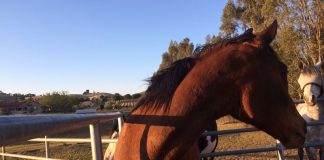The descendants of horses used by the Sioux Indian tribes until the late 1800s are considered a historic treasure in North Dakota. Called Nokota Horses, they have been honored as the state’s official equine since 1993. But in the wake of economic challenges and a hay shortage in the area, the group tasked with preserving those bloodlines is facing difficult decisions.
“This is one of the most difficult situations we’ve been in since the formation of the conservancy,” Executive Director Sally Hauge told The Forum of Fargo-Moorhead. “While it’s never been easy, it hasn’t been the struggle it’s been this year.”
The Conservancy believes there are approximately 1,000 Nokota Horses in the world today. Some of them roam the Theodore Roosevelt National Park in western North Dakota. Earlier this year, in recognition of the breed’s historical value to the state, the state legislature passed a resolution urging the National Park Service to take steps to help preserve these horses.
Before the breed was recognized, many of its number were rounded up and sold—many to slaughter—by the NPS in the mid-20th century. Public outcry led to the protection of the wild herds with occasional round-ups where some horses were sold to adoptive homes to keep the wild numbers in check. According to the Conservancy, stallions of other breeds, including a Quarter Horse and Arabian, were introduced to the herd to create horses that would be more marketable to buyers at auction.
In 1986, brothers Leo and Frank Kuntz began to purchase selected individuals from the herd in order to preserve what were believed to be the purest original bloodlines. That herd formed what is now the Nokota Horse Conservancy’s herd.
To learn more about the Nokota Horse and its history, visit NokotaHorse.org.






It’s been tough all over. Here in CO, DreamCatchers Equine Rescue has over 200 horses to feed. It’s always been a struggle for them and this past year has forced them to stop taking in rescue horses. It always hurts my heart to hear of great organizations having a difficult time.
The Nakota horses are stunning! I hope they can save them!
We ourself, had enough hay. But the people who sold hay, “really” made the profit. It does not take too much knowledge, to know, that a large round bale, cost about 10-12 dollars to make, then to resell at 120-150….some profit….Lots of people with horse were hurting very badly. 65 horses were found straved to death, in either southern Wis or northern Ill. For what reason, other than no hay or could not buy it or find it.
Beautiful horses!
h
hope there is a solution before it is too late Fortunately for me have 5 acres of hay waiting to be cut as soon as it quits raining. I do agree some farmers gouge the horse owners over hayprices. Its sad that animals are dtarving because there isn’t anyone to give them compassion and food
Good luck to them!
Everywhere, where there was a dought, animals were suffering. Places that did have hay, were offered more money for it by “hay buyers” who did have the fund, more than the local horse people. The horses and their owners, were hurting very badly. It is call “greed” that rescues and horse people/horses needed the hay so badly, but without funds to buy it.
I feel sorry for all the rescues and owners of horses that have no hay.
Just wondering why some people do not leave a comment, other that one “letter” which does not make any sense.
I live in ND but have not heard anything about the Nakota’s being short of hay…..I wish people would inform the public more about these issues so that others could help.
Many areas were hit by draught last year, Ohio included. With this Spring bringing in fresh grass, surely there is pasture for the horses, with all the farm land up there, I’ll bet someone would be willing to turn fallow land to hay
out here in Southern California we are short on hay and what we have is expensive, a bale of alfalfa or Bermuda approx 12 flakes, not the best quality is 20.00 a bale, Heard they are selling the best to China. Dont know if that is true